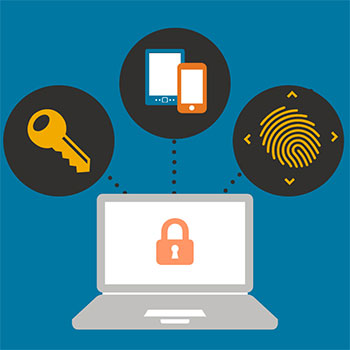Mobile crypto wallet security is your frontline in the digital finance battle. Imagine your crypto as gold tucked in your pocket. You wouldn’t stroll through a maze of hackers without a shield, right? That’s what’s at stake here. I’m showing you how to become Fort Knox, not a sitting duck.
We’ll start by sizing up the enemy—understanding what makes your wallet an easy target. Then, we’ll armor up with tactics that hackers dread. It’s all about making sure your digital treasure trove stays exactly that—yours. Grab your digital shield; it’s time to fortify your wallet.
Understanding the Dangers: Mobile Wallet Vulnerabilities and Attacks
The Common Types of Mobile Wallet Hacks
Mobile wallet hacks are a real threat. Hackers often go after hot wallets. These are wallets connected to the internet. They do this because they can quickly transfer funds. They also target mobile wallet encryption. They try to break it to get to your valuables. One of the worst things they can do is steal your private key. This is like taking the key to your home. Another thing they might do is guess your seed phrase. This is a backup phrase for your wallet.

Be careful with public Wi-Fi when doing crypto transactions. Hackers often watch these networks. They try to steal info like your wallet password. Secure mobile networks are safer. Here’s a good rule: if you wouldn’t share your credit card info over a network, don’t use it for crypto transactions.
Decentralized Wallet Risks and How They Affect You
Another kind of wallet is the decentralized wallet. This doesn’t rely on a central authority. Sounds good, right? But there are risks. The biggest one is if something goes wrong, you’re on your own. If you forget your password, there’s no one to help you reset it. If someone gets your private key, they can take your money. No one can stop them.
To avoid these issues, keep good track of your wallet info. Protect your seed phrase and private keys. Keep them far from prying eyes. Have backups in different places. Keep your passwords complex. Also, watch for phishing attacks. These are fake messages that trick you into giving away your private info.
Finally, remember SIM swap fraud. This is when someone tricks your phone company. They switch your number to their phone. Then they can get into your accounts. Always use a pin or a password with your phone company. This adds an extra layer of barricade.
Mobile wallet security is not a one-and-done deal. Keep learning and stay alert. There’s always a new threat on the horizon. But with careful steps and keen attention to security, you can keep your digital gold safe in your mobile wallet.
Fortifying Your Mobile Wallet: Implementing Robust Security Measures
The Role of Multi-Factor Authentication and Biometric Features
Your mobile wallet is like a digital safe. Think of multi-factor authentication (MFA) as a series of locks that keep thieves out of your precious digital gold. With MFA, to unlock your wallet, you’ll need more than just a password. You could get a code on your phone or use your fingerprint. Hackers find this tough to beat. Add biometric features, and security gets tighter. It’s like having an unbreakable lock.
Fingerprints and face scans are like secret handshakes with your wallet. They make sure that only you can get inside. They can’t be guessed like a password. That’s why adding biometrics to your mobile wallet locks it down well.
Choosing Between Hardware vs Software Wallets for Enhanced Security
Now, let’s talk about the two main wallet types – hardware and software. Confused about which to choose? Here’s the deal: Hardware wallets store your crypto offline on a physical device, like a flash drive. You connect to your computer or phone when you need to use your crypto. They’re super secure because they’re not always connected to the internet. That’s what we call cold storage.
Software wallets, on the other hand, live on your phone or computer. They’re always ready for action, so we call them hot wallets. Great for when you need quick access. But, they are online, which means they can be at risk for cyber-attacks. If you’re active in trading, a software wallet works best.
Both have great security, but hardware wallets have the upper hand when keeping your crypto locked down tight. With software wallets, remember to keep your software updated. Outdated apps can be a backdoor for hackers. Choose a trusted wallet app and update it, like changing locks on your doors.
Remember: safety first, always! Every choice, every update, every lock keeps your digital gold secure.
Proactive Defense: Preventative Practices for Mobile Wallet Safety
The Critical Importance of Regular Wallet Backups and Software Updates
Always backup your wallet. It’s like a safety net for your digital money. Keeping your wallet software fresh is just as important. It’s your shield against hackers. Mobile wallet encryption helps. This means turning data into codes to keep thieves out. Think of it as your wallet’s secret language. Regular backups and updates keep that language tough to crack.
How to Secure Your Crypto Assets Against Phishing and SIM Swap Fraud
Phishing and SIM swap fraud are sneaky ways hackers can steal from you.
For phishing, always check who’s asking for your wallet info. If unsure, don’t click! For SIM swap, it’s trickier. That’s where someone takes over your phone number. They can get into your wallet using your phone! So what can you do? Simple: add layers of security.
Start with multi-factor authentication. Think of it as a series of locked doors. Only the right keys get you in. Use biometric features too. Your face or fingerprint can be a key no one else has. Add strong passwords and never reuse them. Mix different letters, numbers, and symbols.
Can’t stop a phishing attempt or SIM swap scam? Quick, report it! Get in touch with your mobile provider and wallet service. Be fast to beat the bad guys.
Remember, your crypto is like gold. Keep it safe with smart moves!
In Case of Emergency: Responding to Security Breaches and Loss
Crafting a Wallet Breach Response Plan
If your mobile wallet is hacked, act fast: Change your passwords and move your funds. Mobile wallet hacks can be a nightmare. You need a plan to wake up from it. First, stay calm to think straight. Then, disconnect your device from the internet. This stops the hacker from getting more data. Next, update your wallet and device software. Often, this fixes security holes. Check your wallet’s transaction history for unknown activity. Contact support for your wallet app if you spot something fishy.
After that, it’s time to secure your wallet. Enable multi-factor authentication if you hadn’t before. This adds an extra layer of defence. Change all passwords linked to your wallet and other accounts. Use a password manager to keep track of them. Remember, a strong password can block many hacking attempts.
Finally, tell your friends and family about the breach. Scammers might try to con them too. Monitor your accounts closely for a while. Getting through a hack is tough, but you’ll learn how to keep your crypto safer going forward.
Lost Phone Protocols: Ensuring Your Crypto’s Safety
Losing your phone can send chills down your spine, but there’s hope for your crypto. Here’s what to do: First, lock your phone using its built-in security features. This often can be done from another device or computer. If your phone ends up in the wrong hands, this can keep them out.
Next, remotely wipe your phone data if you feel it’s gone for good. This may seem drastic, but your wallet’s safety is worth it. Wipe it remotely through your mobile operating system’s security features. But before you do that, make sure your wallet’s seed phrase and private keys are safe somewhere else.
Then, alert your carrier and suspend your service. This prevents sim swap fraud. Hackers love using this trick to get into your accounts. Contact your wallet provider and tell them your phone is lost. They may have specific advice or steps to follow.
And now, for the future. Think about using cold storage for most of your crypto. Cold storage keeps your crypto offline and safe from mobile wallet vulnerabilities. And don’t forget, regular wallet backups are crucial. They save your crypto if you lose your phone. Keep your seed phrase in a safe place, too. It’s the key to accessing your funds no matter what.
Losing your phone doesn’t mean you lose everything. With a cool head and the right moves, your crypto can stay safe. Remember these steps, and sleep easier knowing you’re ready for the worst.
In this post, we tackled the risks tied to mobile wallets, from common hacks to the ways they can hit you hard. We looked into how you can toughen up your wallet, weighing hardware against software options and the role of extra security steps like multi-factor checks and biometric locks.
We didn’t stop there – proactive defense is key. We dug into why you must back up your wallet and update your software without fail. And to keep your crypto safe, we explored beating phishing and SIM swap scams.
If trouble finds you, don’t panic. We’ve armed you with a plan for when breaches happen and steps to secure your assets if your phone goes missing.
Stay sharp, stay secure, and don’t let your guard down. Your mobile wallet is a powerful tool, and with these tips, you can keep your crypto assets locked down tight.
Q&A :
How can I ensure my mobile crypto wallet is secure?
Ensuring the security of your mobile crypto wallet is a multi-faceted process. Start by choosing a wallet that has a strong reputation and offers features like two-factor authentication (2FA) and multi-signature support. Always keep your software updated to the latest version to protect against vulnerabilities. Use strong, unique passwords and consider using a password manager to keep them safe. In addition, never share your private keys or seed phrases with anyone, and consider using hardware wallets for added layers of security if possible.
What are common security risks with mobile crypto wallets?
Common security risks for mobile crypto wallets include phishing attacks, where scammers try to trick you into giving them your credentials; malware that can be installed on your device to steal your information; and physical theft or loss of the device. Users also face the risk of using unreliable or untrustworthy wallet applications. It is crucial to stay vigilant against these risks by regularly updating your wallet software, using comprehensive security measures, and only downloading apps from reputable sources.
What’s the difference between a hot and cold mobile crypto wallet in terms of security?
A hot wallet is a mobile crypto wallet that is connected to the internet, making it more convenient for frequent transactions but also more susceptible to online attacks such as hacking and phishing. A cold wallet, on the other hand, refers to a wallet that is not connected to the internet (such as a paper wallet or a hardware wallet) and is used for storing cryptocurrencies offline for improved security. Although cold wallets are less convenient for regular trading or spending, they are generally considered safer from online threats.
How can I recover my mobile crypto wallet if my phone is lost or stolen?
If your phone is lost or stolen, the ability to recover your mobile crypto wallet depends on having taken appropriate backup measures beforehand. Most wallets will provide you with a recovery seed or phrase when you first set them up. It’s critical to write this down and store it securely. To recover your funds, you’ll need to install the wallet application on a new device and enter the recovery phrase. Always remember that anyone with access to this phrase can retrieve your wallet, so it’s important to keep it private.
Are mobile crypto wallets more vulnerable to security threats than desktop wallets?
Mobile crypto wallets can be considered more vulnerable to certain types of security threats, like theft or loss, given the portable nature of mobile devices. However, they are also often equipped with app-based security features such as biometric locks that add a layer of protection. Desktop wallets, while generally more secure from theft, might be more exposed to online risks if the computer is regularly connected to the internet. Both types of wallets have unique vulnerabilities, so employing strong security practices for any wallet type is vital.





